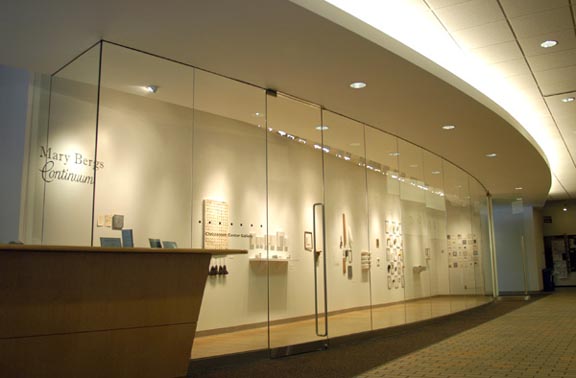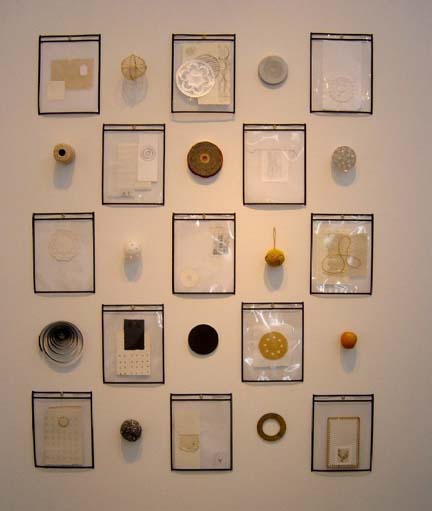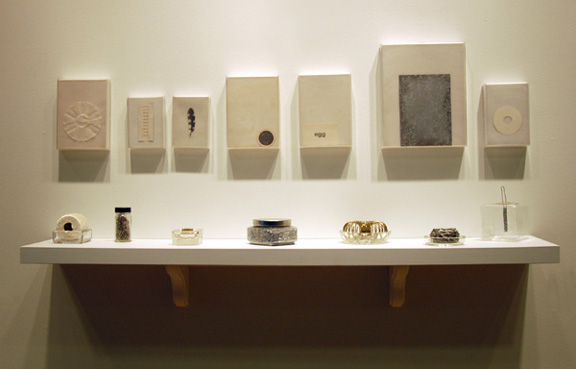Mary Bergs at Augsburg: Overhearing the Things
Chris Atkins describes the experience of seeing, and sensing further, Mary Bergs' assemblages at Christiansen Gallery at Augsburg College in her show "Continuum."




I’m sure this has happened to you: there’ve been a few times when I’ve caught myself answering my own questions or carrying on a conversation with no one in particular. Most of the time I catch myself answering my own questions before someone else does. I still wonder…how long would I have carried on talking?
For many of those artists who traffic in the realm of found objects, mining flea markets, second-hand stores, and secret locales, I hear this kind of conversation with the absent, a counter-dialogue with history and previous artistic statements. In other words, working with found objects provides another means to discuss art, one that goes beyond the sanctioned practices of painting, sculpture, and photography.
Mary Bergs’ show Continuum, which includes found-object assemblages, is a related but different form of address. Due in part to where she directs this address, the show transmits a found-affect but does so by making the ‘found object’ a conversation among objects that is overheard by the viewer.
In Sequential, the arrangement of the papers and small canvas have obvious overtones of the written language but they also riff back and forth on notions of sentence structure and erasure. One of the stronger pieces in the show, Positional Notation, is seven wall-mounted displays of flat objects set behind opaque glass. Below them is a narrow shelf holding seven still-life objects. The two sets are bound in a very loose correlation where pins, twine, tiny bottles, and glass dishes converge into a very polite formal conversation. Looking more closely, what I seem to be overhearing is a very elaborate banter, back and forth, on material specificities. Still, underneath the din, I’m still quite intrigued by what I’ve (over)heard about volume and texture.
In addition to Bergs’ play with language and found objects, she pays particular attention to the presentation of her assemblages. The materials she has gotten together use a very deliberate crafty vocabulary. Her work, seen from afar and arranged as it is, is very seductive and it did draw me in quite quickly. But I had to withdraw a little bit once I detected some underlying calculation and rigidity. In pieces like Forms of Interpretation, the lovely paper collages are muffled behind the fastidious, almost clinical, plastic sleeves they are hung in. More follow-through and attention to the specificities of the materials would have yielded some more intriguing affects.
In sum, Bergs’ Continuum pieces take the form of a visual language, albeit in a proximate nature, without a lot of syntax; one where sentences aren’t necessarily written, but where words, as shapes and objects, are heard. What’s refreshing here is the absence of cliché and didactics. The aesthetic of her work is an opening, much like a sketchbook, for the audience to see and listen to the way she works through her assemblages. While Bergs has been a very generous host, there is the potential for many more conversations to come, for us to overhear.